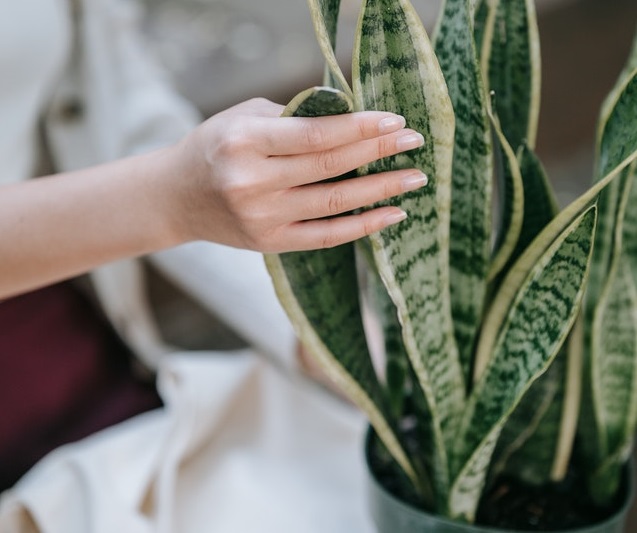Snake Plant is easily the most popular succulent of all. Super easy to take care of–some people say it actually thrives in neglect, anyone living in a suitable climate can keep some snake plants either in their garden or in their home. However, a true plant lover wants the best for their succulents. And if you want to enjoy your Snake Plant in full beauty, with thick healthy green leaves, you should know what’s best for it. One of the questions many growers have is whether a snake plant needs a drainage hole. We will try to answer it on the following lines, following both scientific evidence and my personal experience with growing snake plants.
Before we dive into details, let me give you quick answer to the question (not a comprehensive one though): In principle snake plants do not need drainage holes to survive. As it al almost always the case with plants (and perhaps with most things in our life), things aren’t as simple as they seem. The fact that Snake Plant doesn’t necessarily need some drainage doesn’t mean you should opt for a pot without drainage hole. Let me explain it.
Over-watering is the no. 1 problem of snake plants
Snake plants is one of those plants you can leave at home while embarking on a one month long pilgrimage in Spain, or on a prolonged seaside stay to recharge your batteries. Returning home, you may barely notice any negative impact of your neglect on the plant. Maybe the leaves will discolor a little, or won’t look so fresh anymore. But that’s basically it. What many people do not realize though is that plant’s strength can sometimes become its main weakness. Let me explain.
It just comes natural to us to water our plants. At the end of the day, each living thing needs water (though some men believe beer is enough to sustain one), and snake plant is no exception to the rule. When watering other plants, we will often water snake plant as well. Perhaps out of habit, perhaps out of precaution, or perhaps because we do not know enough about Snake Plant, and the optimal watering schedule. Because of this people often see the leaves of their snake plants turning yellow, which is a result of over-watering. Even if the leaves do not turn yellow, the plant may lose its charm if watered too often.

Drainage holes help prevent over-watering in Snake Plant
Having a pot with drainage holes will help you prevent this issue. Look, maybe you know how often to water your snake plant. But maybe you forget in a heat of a day, or one of your relatives waters it, or whatever. At the end of the day, big chunk of snake plants in the world gets much more water than they need (and water is sparse, so we should try to avoid wasting it, for whatever reason). If your pot has no drainage hole, the water will accumulate in the soil, keeping it wet permanently, which can easily cause root rot.
And when the roots of your plant rot to certain extent, they won’t be able to transfer the nutrients from the soil to the leaves of your snake plant. The leaves will turn yellow and the plant will eventually die. Nothing of that would have happened if you had a pot with a drainage hole (and of course used the right soil mix etc). Because the excess water would simply drain away, the soil won’t remain too wet, and your snake plant would continue to thrive. Sure, it isn’t necessary to have a pot with a drainage hole. But having it there makes things much easier when it comes to preventing over-watering, the most common problem people have with snake plants.
If you have your snake plant in a pot without a drainage hole, you can always drill one
I can imagine your first reaction. Your beautiful snake plant is already planted in a wonderful pot you got in the store, be it from terracotta, wood, glass, or even plastic (though plastic pots are rarely beautiful and I would not recommend them for true succulent lovers). There is just one problem–the pot has no drainage holes. What to do now? Should you buy a new pot, spending money again?
Actually it isn’t necessary. You can always drill a hole to your pot, even if the plant is already there. For plastic pots this is super easy, you can typically do it with a sharp knife in a second. For terracotta or glass pots things get more tricky, but if you use a manual driller, or even the electric one but control the rotation speed, you can always drill the hole to the pot from outside, without breaking it. And if you are not sure, you can always get a new pot, and use the original one from your Snake Plant for some other plants that does not need drainage.
Conclusion
Snake plants do not need pots with drainage holes, but it is much easier to prevent over-watering and root rot if you plant them in pots with drainage holes. Think about it in this way: pots with drainage holes do not cost more than pots without them. For every succulent, including the snake plant, it is better to have a pot with drainage. Hence I cannot see a single reason why you would want to plant it in a pot that doesn’t have it… Hope this helps, and good luck with your plants!
Matthew
May also interest you:
